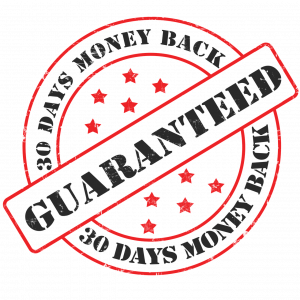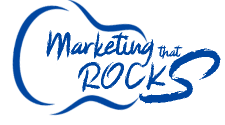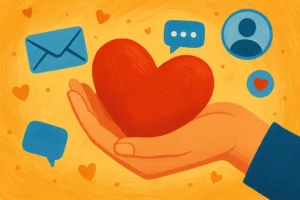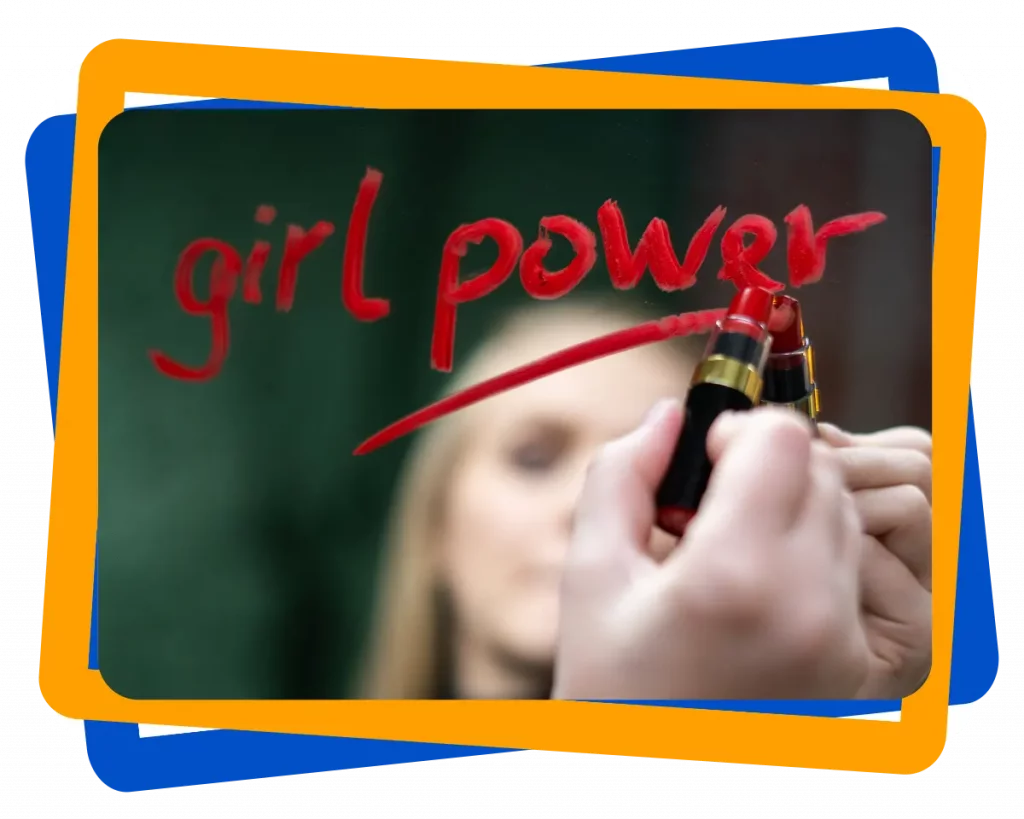Do the easy “tricks” really exist by which you can earn a lot more money with the same or even less effort?
YES. They do.
There are millions of tricks. But for starters, here are 5…fast, easy, and very powerful.
I guarantee you if you use these 5 ideas, or even just one, you could, easily, double your online requests or sales.
In the real world there are several ways to double your sales: double your price, double the number of products you sell, double the size of your audience. However, when you’re playing strictly with online marketing tools, there are two different ways to double your sales.
The first one is to double your visits (with the assumption that you keep the same quality of visits).
The second, and easier one, is to double conversions.
This article is focused on doubling conversions. Doubling is easy when you do some basic things well. The better you present your offer or product (I know you already did a good job), the easier it is to increase conversion percentage.
Let’s backtrack a bit. If you have a website, conversions are usually much lower than in brick and mortar shops… 1:100 visits are acceptable, that’s 1%. That’s on “cold” visits when people still don’t know anything about you, your offer, your product.
But it’s possible to achieve even 20:100…depending on the quality of visits, the offer itself, or the actions you ask a consumer to undertake.
I emphasize ‘the actions you ask a consumer to undertake’, not just you wish her to undertake.
To say “Click here” or even “order here” is one sort of command, and it increases conversions instantly.
I don’t want to sound rude, but online sales always start with these two assumptions…
- Visitors are STUPID
- Visitors aren’t THAT STUPID
Contradictory, but both are correct. You have to “draw” your users in and assume that they are stupid. Not because they are really stupid, but because they simply scan content fast, not really absorbing what’s in front of them on the page and they don’t pay much attention to the value you’ve presented. Additionally, your customers are depending on you to guide them – ‘do this, then do this’ and so on.
They need clear instructions, commands, steps. You mustn’t force them to think. If you sell anything online you will notice all kinds unbelievable, seemingly stupid questions from shoppers but that’s strong feedback that your offer isn’t clear enough and that you didn’t give a specific command so they could understand their next move. She who doesn’t understand you, won’t buy from you.
And, you also have to take into account that the buyer has a lot of reasons not to buy…all kinds of fears and questions you have to answer, maybe even before the user intentionally asks. In fact, in the VIP content received by readers of ‘Secrets of Online Convincing’, just addressed the strong need to gradually and carefully build trust.
Anyway, you know your web site…you know what is where. It’s clear to you, but to your potential buyer, probably not. It’s a mistake to assume that everyone thinks like you and understands your messages the same way you do.
The user often doesn’t know what is the next step and what to do so you have to direct them and say “do this” or “do that”.
When your first ‘call to action’ (or CTA) is a call to buy, conversions are, of course, lower, but when your CTA is something that is meant to only generate a “Lead” (potential buyer’s contact data), it’s completely possible to get 10-20%.
That is a situation when you want to capture someone’s email address or to submit their request without them feeling risk. To have a “mid-step”, or even a series of mid-steps, before full on advertising of your offer, is often the best way for more expensive products to build a successful conversion rate. This is often referred to as the top levels of a marketing funnel, recently detailed in the VIP content you’ll enjoy here.
In any case… often, it’s easier to double conversions than to double the number of visits, and therein lies gold. The website that converts well will obviously pay off more. Visits aren’t free (you’ve seen me write that before)…and with that, every visit pays off more when the website is “right” for your visitor and convincing enough.
In the end, the winner is the one who can spend the most money to gain a new client. Why? Because all ads work on the auction system, everything depends on your budget. you’ll be in a much better position if you can set an ad budget to $20/day; with $5/day you can control your spending yet win just a few auctions, even if you set the right audience.
So the one with the right audience and bigger budget is a winner.
But before I tell you which are those steps that can double your conversions…
Ask yourself…
Do buyers influence sellers or do sellers influence buyers?
Who offers to whom? Sellers of course.
So, you are the seller, with your selling methods you influence buyers. It’s not the buyers’ fault that they don’t buy more, the sellers are guilty because their ability to influence the decision to buy is handled badly.
American culture is wrapped around the consumer because the sellers acquiesced and designed whole environments to please consumers’ culture… the shopping mall!
Think about it…
Whole indoor streets filled with shop after shop, restaurants, comfortable chairs, attractive displays, free parking, samples of foods, cosmetics, skin care, music, play areas for the kids. “The customer is always right” phrase implanted in everyone’s heads. That sentence alone is responsible for the mentality and behavior of sellers and buyers, and marketing laws.
Of course, there are limitations, and no, the customer is not always right, but the STANCE “the customer is always right” is somehow more useful for the sellers. That belief affects their behavior and improves sales.
Of course, there will always be the occasional jerk, customers who abuse this stance, that’s small collateral damage compared to the enormous sales increase that stance brings.
In order to have strong sales and bigger consumer culture, it’s necessary that we as sellers change that exact unaccommodating mentality.
The customer is always right. – A rich seller mantra. Here is a man who has 400 million dollars a year in sales thanks to this philosophy. Also, read how they observe clients’ value throughout their lifespan.
While it’s great to generate first-sale profit, the goal is to build a relationship and gain lifetime customers.
But enough with philosophy.
Let’s go back to CASH.
You have a business…big, small, it doesn’t matter. You are an entrepreneur, specialist, self-employed. Whatever. It’s in your interest that more people buy more.
For that to happen, it is necessary to support the consumer-focused culture, make buyers “relax”, and to buy more easily, without fear.
Here is how with the top 5 magic tricks:
1. Give people a guarantee. And more than that.
But I can’t give a guarantee…bla bla bla…
That’s not true.
You MUST give a guarantee. Figure out which one.

Image by harshahars from Pixabay
The essence is that your consumers have a right to return the goods and ask for a refund or replacement or some comparable value in most cases.
With this, as well as the delivery of promised value, your job is to remove your clients’ fear of making the wrong decision.
The point is it should be clear to the buyer that s/he CAN change her/his mind. WHATEVER the reason.
It doesn’t have to be damaged goods. They can simply realize they don’t want to buy it, they don’t have the money right now or they just want to replace it for something else.
If the buyer tries something and you say “Feel free to take it, and if you change your mind, just bring it back without damage within 14 days and you will get ALL your money back. Don’t worry.” Boom. Sold. No fear. You explicitly said, underlined, and advertised that they have a right to change their mind and return the product. No problem…
Primarily, you eliminate fear from a wrong decision, risk, etc… and secondly, you gain trust. Remember, people buy from the one they know, like and trust.
When someone comes and says “Good afternoon, I would like to return this”… GOOD AFTERNOON, OF COURSE, NOT A PROBLEM AT ALL. We are really sorry. Would you take a look at something else? Could we do something better next time? We are sorry that you didn’t like it, we are here for you anytime, come again. Smile, smile. Goodbye…have a nice day. No, wait. HERE IS A GIFT (special gift only for the people who ask for money back), and a 10% discount to any of the following shops.
But people will abuse that…
SO WHAT?
Let them abuse it. It’s OK. The percentage of those who will ask for their money back is nothing compared to your sales increase thanks to vigorous promotion of your GUARANTEE and refunds. Let them buy without fear.
This is key: Every time you give money back… it’s an OPPORTUNITY to get to know your customers better, where you erred and what you could do to improve the offer. Customers who return something, even when they are wrong, is the customer who is asking you to help them change their mind; help them RELAX and buy more EASILY next time. No fear of buying and regretting wrong decisions.
But, you ask, how could I guarantee when I am selling services…
Guarantee ANYTHING. It doesn’t matter what. It’s important that the word GUARANTEE is there in some form. As a service provider, my client agreements include details on how a customer can get their money back (and I’m happy to write not once has it been necessary!)
Here are sample ideas…
- We guarantee the lowest price. If you find it cheaper, we will match the price. (They typically won’t bother to search. It’s enough that you said it for them to believe you have the best offer.)
- We guarantee results in 24 hours. If you don’t get results within 24 hours, it’s free.
- We guarantee you whiter teeth. If your teeth aren’t whiter after your treatment, we will return your money.
- We guarantee that in 3 months you will learn 300 Spanish words, otherwise we will return your money (under the condition you take all the classes).
- We guarantee you will lose up to X pounds if you follow this regime of diet and training over 90 days..
- We guarantee results – do X and if Y isn’t reduced/changed/improved, we give your money back.
- The guarantee means: we are so sure about our product and service quality, that we can GUARANTEE with absolute confidence.
The guarantee creates trust in the product quality. Trust that you are going to keep your word, promise.
In almost every business you could SOMEHOW pack in the guarantee so it sounds attractive.
With some businesses and products guarantees are easier to make than others. It’s the easiest with personal products. You just have to emphasize…” don’t worry, buy it, if you don’t like it you can always return it within two weeks, just save the receipt, that’s all.”
How Apple does it
Here’s an example… A buddy of mine ate Chinese food in a restaurant and asked the waiter to wrap the leftovers he couldn’t eat. Then he put that food in his backpack, where he carried his MacBook laptop. Then he rode home on his bike. Of course, all that food spilled all over the laptop. The laptop was GREASY from who knows what. Disaster. He wiped it a little, waited for it to dry and went to an Apple store.
It was his turn and he said: “I don’t know what it is, it doesn’t work anymore”. The girl went in the back and returned with a NEW MACBOOK and said: “Here’s a new one, sorry that happened, thanks for waiting, goodbye.” Just like that. She didn’t even ask what happened. She just gave him a completely new laptop. Now, of course Apple was not responsible for his Apple’s failure; it was that Chinese dinner. However, the Apple policy was to create the best possible experience for their customer, the kind of experience that generates huge positive word of mouth and often results in more sales.
Maybe that isn’t the case in every Mac store, but this is a direct example from my friend’s experience.
They know that this guy will also buy an iPhone and iPad, and he will be a WALKING BILLBOARD wherever he sits with that laptop. And he will buy Mac – and recommend Mac – the rest of his life.
They know the power of Word of Mouth Marketing.
The best answer when someone asks for a refund is… “SORRY. We are sorry we failed to make you happy this time… here’s your money back, and a GIFT for your trouble getting here and for the STRESS you have suffered.”
Let’s see now how to minimize the mistakes and improve the product and the service quality so fewer people in the future ask for a refund. But we start with an apology.
Gift…coupon, whatever, is a great option.
Give people MORE than they expected so they can be THRILLED. And thrilled buyers will recommend you. It’s one thing when someone asks and they come up with an appropriate recommendation. And totally another thing when customers go around and brag out loud about some product or service that delighted them without any compensation from the seller.
Your customers are sharing information, in fact, helping their friends and family. That sense of helping is their reward and your reward too!
As a seller, if you aren’t ready for the risk of loss, you aren’t ready for profit either.
A generous (strong) guarantee is actually your readiness to lose. It’s a small risk for a seller and a huge benefit for the buyer. Enormous psychic relief. Unfortunately, not many sellers understand the importance of taking that minimal risk to gain the enormous potential sales increase.
I guarantee if you come up with well-crafted, risk-reducing guarantees, it’s guaranteed that your sales will increase.
On the website or offline, it doesn’t matter.
2. Tell them what to do and seek a sale.
It’s called “Ask for the sale”.
You can’t just present your goods and assume the sale; wait for the customers to fight in front of the store.
So, you should ASK. Selling is an active process. Identify your potential customers’ problems, and see if your offer could solve that problem; if it could, then you offer.
The ‘Call To Action’ is a standard thing that splits brand marketing and direct marketing.
Direct marketing implies that you ask the customer to do something, take some action (call a number, fill a form, order, provide your email) right now or until a certain date. You ask for action and measure the result.
On the other hand, brand marketing is when Coca Cola puts up a billboard; they have no idea what will be the exact effect of that billboard, how much more Coke they’ll sell. However, they’re keeping their name top of mind for thirsty beverage buyers.
While let’s say, your hotel advertises a vacation in some magazine and says “call 011-123-123 no later than June 15 and book your spot”, then you can measure the number of calls, the number of clicks and the campaign results. You know this number because you used a special phone number for that ad.
The main thing is that you tell your potential customers what to do. Fill out the form, call, leave your email… and you get the RESULT. Always tell them WHY they should do something. “To get the…”, “And we will for you…”, so, it’s about an exchange. There has to be a reason for the customer to take the requested action. Why should they do what you told them? Why is the offer limited? It’s not enough to say “offer is limited”, it needs a more detailed explanation. “At this price, we managed to provide only X rooms because the hotel is usually booked at this time.”
You have to give people a reason why to order right now, rather than later. What will they get if they order or fill something now, and what will they lose if they delay?
In any case, if you don’t ask for a certain action now, from your visitors, you will lose a lot of clients.
Another “catch” is that you always ask your potential customers for the smallest thing possible. Those are “micro-commitments”, where for example, in the boutique…it’s not the goal to get them to buy but to just try on the outfit. To see how they feel in the clothes. To imagine they already have the outfit and imagine what shoes, what purse will work with it.
Don’t try to sell them, just convince them to try and see if they like it. “Try and see how it suits you”… not “do you like it or not?”… but “how do you like it?” You suggestively convince them to like it. That micro-request is not a hard sell. It’s important, of course, that they feel that there are no strings attached and that you are equally happy when they buy or don’t.
When they say “I won’t take it”, of course. It’s not a problem at all, thanks for the visit, we are glad that you refreshed this place with your good vibes. Energy like that will bring them back and next time they will buy something.
Find that smallest thing, smallest action that you could ask your customers to take, just to get in the system and commit in some way, even for the tiniest thing. It could also be that you offer some coffee, soda, water. Where the “reciprocity rule” works very well, there is a bigger chance that they will buy something from the subconscious (reflexive) feeling that they now owe you something, that you are so pleasant that they want to do business with you.
3. Recommendations or “What our clients say”.
Here’s the section you must have on your web site. It works even better if there is “who buys here” or “name dropping – our celebrity clients”; you get the drift. On the other hand, you want to be able to display recommendations from someone people can identify with. As an example.you say “what our other patients say” and if you are selling goods for doctors “what other doctors say”.
Recommendations reduce the risk of a new customer. Nobody wants to be the only fool who got fooled with a bad product! If you don’t have recommendations, either your product needs help or you need to ask for them. Maybe you should have an online book of impressions, or to ask your clients what they think about you in anonymous research. On your website, you should have several recommendations that cover various important “selling points”. Speed, endurance, price, quality.
People buy based on recommendations, the number of stars they see with a company name on a review site. If you’ve ever booked a hotel through Booking.com you’re confident in your choice, know that you made a good decision based on a couple of the main parameters already reviewed by other guests.
You read “what others say”, then you look at a picture, then price, perhaps not in that order. Next, you looked for a location and a room type, does it offer a great breakfast and free parking. You scanned all those factors and each of them could repel you or attract you while you’re making a decision.
Nowadays, recommendations come in the form of the number of followers, likes, etc. The more people like you on Facebook the bigger the trust, which increases your conversions. Every ‘like’ is a micro-recommendation. You should work on that all the time, and until then, add “what our clients say” or “what other doctors, drivers, dog owners, vets say” or whatever.
The point is that prospects should see recommendations from someone who is like them or from an authority, in that area or famous name whose celebrity status automatically confers credibility status .
Here’s a tip on that: use the word “experience”, “our clients’ experience” because people often google the word ‘experience’.
There is a lot more to say about recommendations, how they should look, and how to position them on your website, which additionally gives them meaning, but for now this is sufficient. Recommendations could double your conversions.
Almost any recommendation is better than none. If you don’t have them, ask yourself…why? You aren’t doing something right. Your product is not good enough in regard to price. It’s not positioned well enough. You do not thrill your clients. Only thrilled clients recommend.
I will explain in some of the following posts how you could automatize getting recommendations from your clients, so you have a constant flow of new praise on your services or products.
4. Give them something FREE.
It’s a big mistake if you don’t give something for free. You must, something, anything with a perceived value to your client. It’s like a tester of perfume on a cosmetics counter, bits of buttery pastry in a bakery. The idea is that the buyer gets something she could feel, to know what he’ll get from the product.
Buyers are afraid of something new and unknown. They don’t want to make the wrong decision. When you offer something for free, they lower their guard, they try it, they have nothing to lose. There’s an opportunity to show your knowledge, to prove that you are skilled or really deliver the promised quality. That way they gain your trust and subconsciously feel they owe you. The bigger the value and meaning of what you give for free, the better.
We want potential buyers to think “Look what I got for free, imagine if I paid!” When they pay, whatever they buy, they will be satisfied with that shopping experience because, in addition to getting a product in which they have confidence, at the same time, they’ve settled the debt of what they initially got for free.
Of course, when you give something for free, you ask for their email address or phone number in return, that’s the currency with which they pay you and it is worth a lot (that’s why you should consider the value of everyone’s contact data, so what you give for free will, at the end, be profitable for you).
What you give for free is your deposit toward building trust. What is a sale if not building trust? In most cases, you want lifelong customers, very few products will pay off instantly, and to pay off, you want a serious profi with repeat business, referrals and testimonials for your site or on review websites.
Something “free” you could share before their purchase (as bait), and again with the product or after the sale (then they will recommend you even more…they are more satisfied when they are pleasurably surprised because they continue to get more than expected).
So, the key phrase “And that’s not all!”
And then usually follows ‘an amazing bonus!’…”If you order today, you will get this unbelievable thing, and this and that…completely free”, “Call now and ask for your date with George Clooney” (alright, just daydreaming here).
There is no stronger word than the word FREE. Put that word somewhere, think of something, anything useful. Free delivery, free anything. Advertise that. Promote it. Increase it. To bursting.

Image by Creative Designer from Pixabay
For example, you have a driving school. Give the first lesson for free. And no commitment. Let people see if they like the instructor, without pressure. It’s only important that is something significant and has a certain value for your buyer. To help you build trust and to give them a taste of the real experience they’ll enjoy with ownership. I see too many examples of giveaways that are not relevant to the problem the vendor solves.
5. Increase trust with mandatory elements on your website.
I’m hammering this home: Trust sells. Without trust, it’s hard to get even a few sales. One of the ways to double your sales is to increase trust, as much as possible.
Here’s how…first you need to have a website. Just think about it, people google everything. When they want to make a decision, they see your store or your product, they take down the phone, type your store’s name. And nothing shows up. You don’t have a website? It’s like you don’t exist. Plus if others vilified you in comments on the Internet (bad reviews from competition), then it’s really over.
One bad “review” can ruin your small business if it shows up first on Google when someone searches for your brand instead of your site. If you don’t even have a website, you can’t “defend” yourself by presenting yourself in a good fashion.
The first step is to have a website. Second is that your website has mandatory elements that increase trust. The good old “About Us” page, where you give as much data, pictures, answers on common questions, etc. For people to see that you exist and are credible. At the website’s bottom put your contact data, company data, about yourself, how long you are in business, recommendations, Facebook fan page or other social platforms. People scan all that stuff and they don’t check the details but it helps them to answer the question:
Should I trust them?
If the answer is no, you won’t sell them anything. Done. They leave.
You must provide an address, contact. Buyers must know where they can complain in case there is a problem.
It’s mandatory.
Nobody thinks of that consciously, but those are little signals on the website with which you gain trust. Also, they need to know about your location. If you are on a known street, they think “Oh yes, I know where that is”. Then they can get a picture in their head, a certain perception which is above the website, a physical existence, not just virtual. So, the page or even a section such as “How to get to us”, with a Google map or which buses come to you, if there is a parking lot near you, any information which is useful.
Also, when you have details about “How to find us”, on some level it tells people that other people ask that same question. It means that other people want to get to you. Don’t forget the “social proof” signals; an average buyer doesn’t want to be the first because people don’t like to make a mistake. They avoid the insecurity and what they don’t trust. Knowing you’re already popular with lots of inquiries and great reviews helps, big time!
To sum up…
5 ways to double your sale
- Add Guarantee
- Give them clear instructions, a call to action of some kind
- Get strong recommendations and present them
- Give them something for free…before, during, after the shopping
- Increase trust with mandatory website elements
You can apply this fast and easy with almost any business. No mistake, all this is proven to increase your conversions and with that sales, profit…everything.
So, did you like these 5 fast, powerful tricks of conversion? Great! Now implement them…
‘Til next time,
Andrea







2 thoughts on “How to double your sales through doubling conversions – 5 essential tips”
Did you see I put the guarantee icon on Facebook today? and Allan will be putting it on my website too. Thanks for the tip! I am trying to get my business to survive with this Corona Virus. I have cancelled all in person organizing indefinitely . I will not jeopardize my health. So I am creating a virtual organizing business now. Any tips?
Fantastic, Cindy! I’m happy you found fast value and happier that you implemented this tip. I haven’t see your website’s guarantee yet so I’ll offer tips a smart biz owner like you may have already put in place:
– talk about the confidence you have that allows you to guarantee your work
– talk about your devotion to customer satisfaction that stands behind your guarantee
– be clear about where customers can find more details on the guarantee
– point to customer testimonials that imply the guarantee has never needed to be implemented
– with respect to you now offering virtual service – far out! This is a fast, economical solution and may also help your clients feel accomplished that they’re doing the organizing work themselves, guided by an expert????